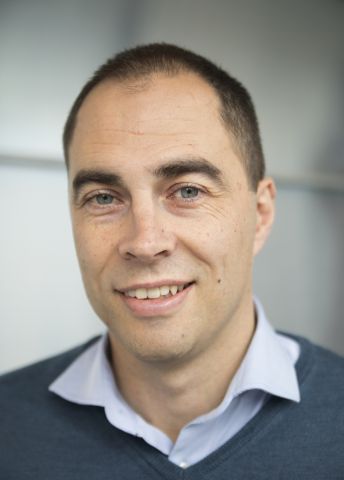
Göran Karlsson
PhD, medical science
Wallenberg Academy Fellow, prolongation grant 2020
Institution:
Lund University
Research field:
Cancer stem cells in chronic myeloid leukemia (CML)


Wallenberg Academy Fellow, prolongation grant 2020
Institution:
Lund University
Research field:
Cancer stem cells in chronic myeloid leukemia (CML)
Hiding in the bone marrow of patients being treated for CML are a small number of cancer cells. They only make themselves known if the treatment is discontinued. If that occurs, they are ready to take over and restart the disease. Karlsson, who is a Wallenberg Academy Fellow, is endeavoring to separate cancer stem cells from healthy blood stem cells, analyze them and find ways to treat them.
“The goal is naturally to find a cure for the disease. We’re not there yet, but it should be possible if we find the mechanisms that make the stem cells resistant.”
Karlsson and his fellow researchers rely heavily on single-cell analyses, a method that has assumed enormous importance in multiple fields of medicine. It involves in-depth analysis of individual cells to determine their DNA, protein content, or RNA, the latter shows which proteins the cell is synthesizing at a given time. Karlsson led Lund University’s major single-cell analysis initiative, launched a few years ago.
“The technique my group used when we started work on CML stem cells has rapidly become outdated. Originally we could study a few hundred cells at a time. Now we’re up to tens of thousands.”
A new challenge then arises: huge quantities of data. Each cell generates thousands of data points, which have to be collated and analyzed. Karlsson explains that it used to require a supercomputer just to upload all these data for analysis. But the team has developed new bioinformatic methods that enable them to perform their analyses using a regular laptop.
“This grant gives me the time to develop methods, instead of being under pressure to quickly publish findings. This is important. You sometimes need to take one step back to take two steps forward.”
One of the team’s major successes to date has been the discovery some years ago of a previously unknown stem cell. It is unique to CML, and has been found to resist treatment for at least three months. This was the length of time that developments could be monitored using the technology of the day.
Karlsson and his colleagues are now involved in two patient studies examining the role played by cancer stem cells in different phases of the disease. One is a Nordic study that is testing what happens when treatment of patients free of symptoms for several years is discontinued.
“We now know that some patients can in fact stop taking their medication without relapsing. This is an important area of CML research at the moment. Although therapeutics ensure normal life expectancy, there is naturally a big difference between taking medication and having a healthy life without side-effects.”
Karlsson’s group will be analyzing samples from patients the day their treatment is discontinued, and then some months later. The aim is to find differences in the cells between patients who suffer a relapse and those who do not. Another study entails taking samples just before treatment begins, and then comparing patients who respond well to the drugs with those who do not. The explanation may lie in the unusual cancer stem cells.
A third study aims to identify epigenetic differences capable of explaining why some cells are resistant to treatment. Epigenetics concerns the molecular differences that determine which genes in a cell are active and which are quiescent. Epigenetics describes how a DNA strand can configure itself in various ways, thereby exposing different genes, or that molecules can be connected to the strand, serving as miniature off and on switches for decoding.
“When the difference between the activity in two cells is very small, differences in epigenetic fingerprint is one of the most sensitive ways to separate them. But of course we don’t know – it might not be the stem cells themselves that differ between two patients with different treatment-outcome; it might be something else, like their immune systems, for example. But whatever the answer is, it’s important to get to the bottom of it.”
A vital step would be new variants of laboratory animals that enable scientists to study cell processes and activity in real time. This has so far been difficult, because it is not easy to culture cancer stem cells or insert them in the lab animals currently used. This will be necessary if new drugs are to be tested at some point in the future, which Karlsson very much hopes will happen.
“The funding we have received enables us to ask the truly conceptual questions. This makes our research really exciting. Although we are not the biggest team in the world we can address the same issues as the major international institutions. It’s true that the competition is then intense – but the key issues are the only ones that are fun! If you’re going to work around the clock, you can’t spend time on boring stuff. You have to do work that’s meaningful.”
Text Lisa Kirsebom
Translation Maxwell Arding
Photo Åsa Wallin